You want to generate leads and grow your business, right?
Then naturally you’ve probably come across content on the internet telling you to use inbound marketing or cold calling to scale your business.
Great.
But, which one is better? How do you choose which one is right for your company?
I’ve grown many companies through both of these strategies so I’m going to lend you my expertise.
Both inbound marketing and cold calling are effective but extremely different.
They require various sets of skills and aren’t made for everyone.
You don’t want to choose one of them and later realize that it wasn’t right, wasting heaps of time and money.
Follow along as I cover the differences between cold calling vs inbound marketing so you don’t make that mistake.
What is inbound marketing?
Inbound marketing is the practice of using strategies and channels that help customers organically find your brand.
No ads. No cold calling. No invasive techniques.
Customers find your content and other assets, learn about your business, and naturally become a paying client.
The reality is this is how most business takes place whether you realize it or not.
Advertisements and in-your-face techniques don’t work as well as they used to in the past.
Inbound marketing is normally associated with the buyer’s journey, as well. Publishing content and other inbound techniques are aligned with each stage which looks like this:

The awareness stage if where a customer realizes they have a problem that needs to be solved. This naturally leads to the consideration stage where research is performed before making a final purchasing decision.
Inbound is built on the foundation of content marketing because of this.
Producing helpful and relevant blog posts, videos, podcast episodes, and other forms of content is fuel to an inbound campaign.
This generates the traffic to your website or another channel while a lead generation funnel nurtures prospects into paying customers depending on what stage they’re in.
However, there’s a new kid on the block.
The buyer’s journey works but HubSpot among other brands have started integrating the flywheel concept for better inbound performance.
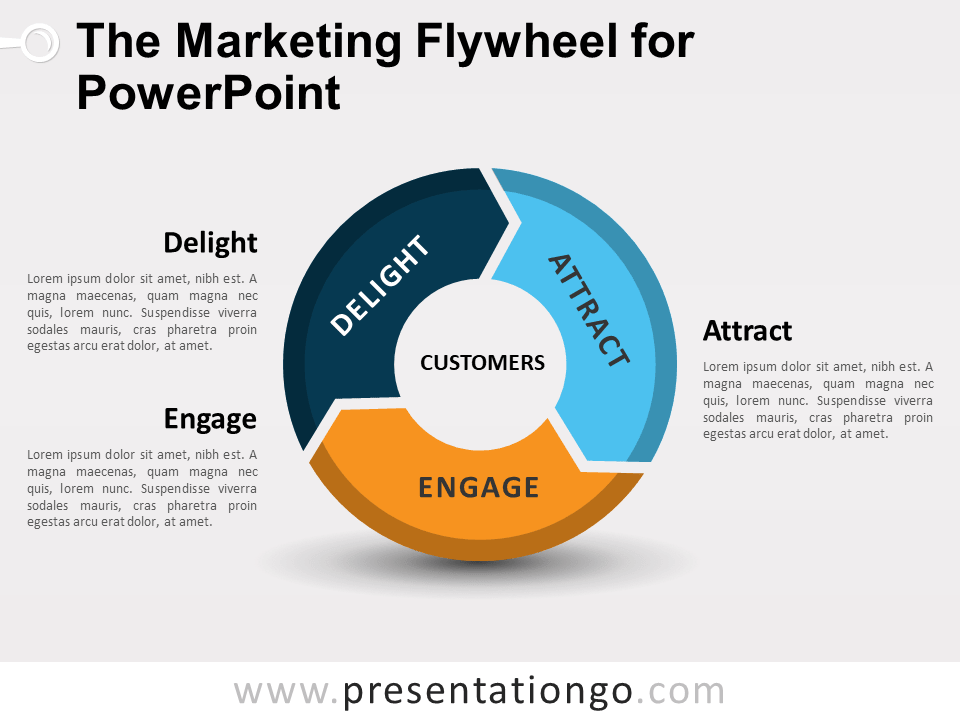
This uses the same idea of attracting users to your business, engaging them, and delighting them so they continue to be a brand ambassador and longtime customer.
Most companies leverage big data and automation to make the flywheel turn itself, too.
And that’s what it makes it different than the typical buyer’s journey. The idea is to continually innovate the funnel for improved performance.
You can do so by collecting data on things like:
- What type of content your customers enjoy over others.
- What lead magnets generate the most subscribers.
- What SEO keywords drive the most traffic.
- Demographics and psychographics of customers.
- Etc
This information can then be used to consistently enhance your targeting, offers, and overall performance of inbound marketing.
But enough about that.
Let’s get into the meat and potatoes… what’s so good about inbound, anyways?
What’s good about inbound marketing?
These are some of the main advantages you’ll gain by leveraging inbound marketing.
It’s cost-effective compared to outbound sales
Did you know that inbound marketing costs 61% less than outbound?
Yep, you read that right.
It’s literally less than half the price you’ll pay to generate an outbound lead.
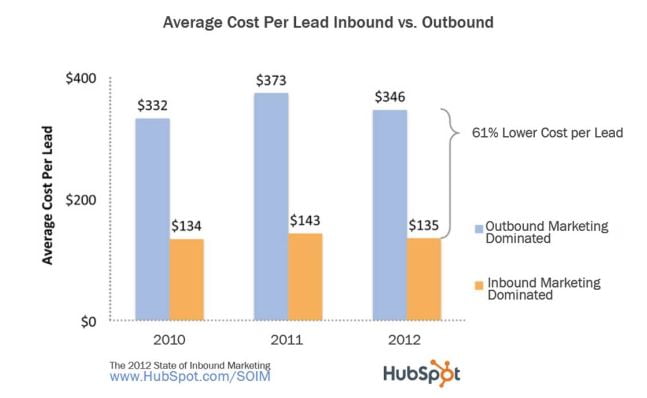
One of the biggest reasons is because inbound marketing doesn’t require as many expensive tools, processes, and large teams.
Additionally, inbound leads qualify themselves to you.
They find your blog through Google, read your content, and reach out for a consultation, for example.
You don’t have to go through 50 bad phone calls to finally get someone worthwhile.
Any agency or business interested in keeping costs low while still generating leads and customers will find inbound marketing perfect for these reasons.
You become an authority
Continuing off of the idea of publishing high-quality content, your brand becomes a thought leader and authority.
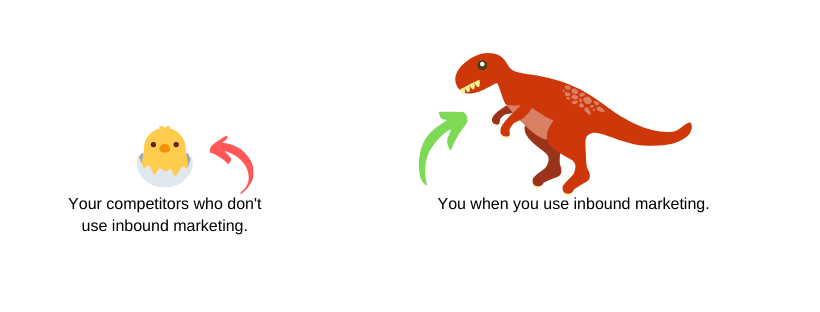
Despite it becoming more competitive — which I’ll touch in a moment — there are still mountains of businesses not leveraging inbound.
They’re missing out big time because of it, too.
Producing content allows you to showcase your expertise and prove to customers you’re a trustworthy service provider.
You can become one of the go-to sources of information in your market with enough time and energy.
Compare that to a business that produces no content and looks like a ghost town, you’ll stand out like a sore thumb.
Builds compounding business assets
When you publish a blog post, video, or other forms of content, they are on the internet forever.
That means the results they generate will continue on for years to come versus cold calling where you hang up and the interaction is over.
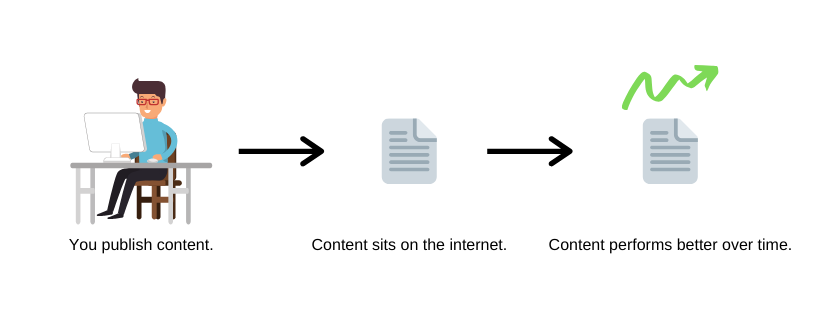
For example, it’s been found that compounding blog posts generate 38% of any given website’s traffic.
Despite this, only 10% of web content compounds. But that’s not a bad thing.
This data shows a small amount of your content will do most of the heavy lifting if you do it right.
Aligns with current consumer behavior
The average consumer read five pieces of content before contacting a sales rep.
But what if you have no content?
Odds are the consumer will leave to find another business to work with.
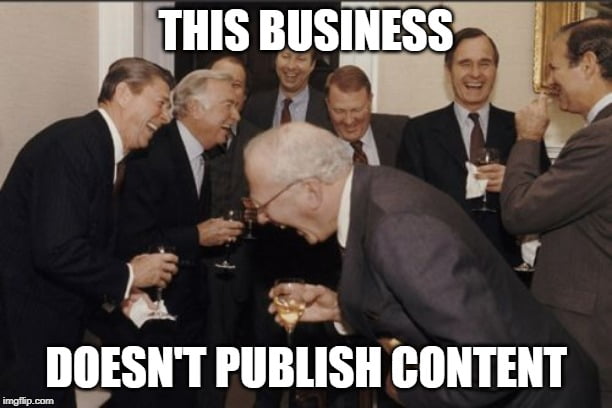
That’s why inbound marketing is so powerful. It’s simply how consumers interact with brands and learn about what they offer.
You’ll want to ensure that you’re producing content that hyper targets a very small group of individuals.
You don’t want to attract and delight just anyone. It needs to be your 1,000 true fans as Seth Godin calls it.
A.K.A the small group of customers that love your product and will rave about it. Some call this a buyer persona, as well.
You can make one yourself based on the customer data you have. Reference every time a piece of content is being created to ensure that it aligns with who you want coming to your business.
What’s bad about inbound marketing?
Not everything that glitters is gold.
That’s why I want to let you in on some things that people don’t talk about when it comes to inbound marketing.
It can take a long time to have an ROI
Yes, inbound marketing costs less and generates leads while you kick your feet up, but it takes a helluva long time to get there.
In fact, it’s been found that content marketing takes up to 15-17 months to have an ROI.
That means you’ll be publishing content for at least a year on a regular basis before the ball starts rolling.
It makes sense, though.
From Google to YouTube and everything in between, it takes a long time to grow an audience, improve your search rankings, etc.
However, once you do hit that critical mass, you never have to prospect again if you don’t want.
I landed a $5k/month client that came from my blog recently, for example. No complaints about that 🙂
Inbound is becoming very competitive
Inbound marketing is all the craze right now. Despite many businesses still being behind the times, more companies are realizing the importance and effectiveness of inbound.
That’s why you need to start ASAP if you aren’t already.
Otherwise, you will fall behind the competition and find it hard to generate any results from inbound.
Trends come and go extremely fast in the inbound world, too. Channels, strategies, and new tools are constantly popping up.
You need to be on the ball and take every little advantage you can.
What is cold calling?
Alright, with inbound out of the way, let’s talk cold calling.
It is the process of phoning an individual within a business that doesn’t have any prior connection to you, hence why it’s cold.
If you had some previous contact, it would be warm and conversions increase because of it.
As much I talk crap about cold calling, it has serious potential for the right businesses and salespeople.
Look how Alex Berman from Experiment27 closed six meetings with Fortune 500 clients thanks to cold calling:
What’s good about cold calling?
These are some of the greatest benefits of cold calling if you choose to use it for prospecting.
You can get immediate deals
Inbound marketing takes 15-17 months. Cold calling takes a few minutes.
Once you’re connected to the right company and decision maker, it doesn’t take long to close a deal if it’s possible.
This can be a meeting, demo, consultation, or whatever’s required in your own sales funnel.
If you make 100 cold calls per day and have a 2-3% conversion rate, you’re generating a few lucrative opportunities every 24 hours.
Scale that with a team and suddenly you’re growing faster than you can keep up with!
I recommend everyone begin a service business by cold emailing and cold calling for this reason.
It’s extremely scalable and measurable
Piggybacking off of what I just mentioned, cold calling is very scalable and measurable compared to the complex nature of inbound.
If you have a good script, team, and lead source, the sky is the limit.
You could potentially make hundreds to thousands of calls per day with enough resources and generate insane amounts of revenue within a short time span.
Similarly, it’s easy to measure cold calling because you only need to look at metrics like:
- How many calls were made versus how many deals were closed.
- What were the best times to call?
- What were the best times to follow up?
- How many follow-ups were needed to close?
- Etc.
A simple but effective model
Inbound marketing is extremely complicated. You need to master content marketing, lead generation, funnels, SEO, email marketing, social media marketing, and the list goes on.
With cold calling, you simply pick up the phone and start yapping away.
You don’t need intense software, years to figure out how the industry works, or anything like that.
It’s really simple which is why so many companies still rely on it and train their staff to become proficient at it.
What’s bad about cold calling?
Cold calling has serious potential, but there are some disadvantages you need to be aware of before pursuing it.
It has a low conversion rate
It’d be nice to make a few calls and close some deals, right? Sorry, it’s not going to happen.
This is because cold calling has a conversion rate as low as 0.31%.
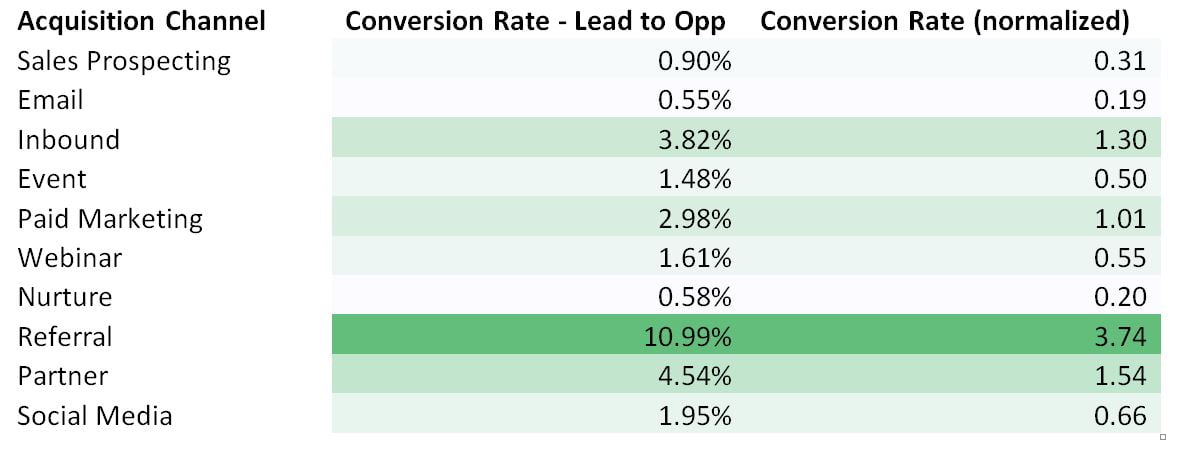
You’d be blessed to move the needle into the 1-3% range.
That’s why any time you hear about cold calling, it’s all about massive campaigns and making enough calls to give telemarketers a run for their money.
If you’re not willing to make 100 calls before getting a qualified lead, it isn’t for you.
That brings me to my next point.
It is very time consuming
Let’s say that the average phone call takes five to ten minutes.
If you make 50 calls per day, you’re looking at a minimum of four hours of being on the phone and upward to eight.
That doesn’t count any other sales and business tasks you need to take care of, either.
All in all, cold calling is very expensive in terms of how much time it takes.
If you don’t want to spend hours upon hours on the phone every day or don’t have the budget to build a team to do so, cold calling might not be for you.
You aren’t building any assets
Once you pick up the phone and hang up, you haven’t created anything. There’s no content, SEO, or residual effect afterward like you get with inbound marketing.
Sure, you might’ve closed some deals. However, you have nothing to show.
There are no blog posts, YouTube videos, Spotify episodes, case studies, or other forms of content to continue driving leads organically.
You haven’t created a marketing machine which is exactly what inbound achieves.
How to choose one of these strategies
Now that you know the ins and outs of inbound vs cold calling, you probably have one question…
How the heck do I choose between them?
Here’s what I recommend based on the data and ideas presented today:
Who can benefit from inbound marketing
- Businesses interested in building a long term foundation that generates leads without the need to prospect.
- Anyone who doesn’t mind learning how to effectively use many different channels and strategies at once.
- Those who want to become a thought leader in their industry.
Who can benefit from cold calling
- Those with larger teams and the capacity to be doing large scale campaigns.
- Businesses who require immediate clients and traction.
Final thoughts on inbound vs cold calling
Inbound marketing and cold calling are some of the most effective strategies to grow a business.
It can be tough deciding which one is better for your brand, however.
I recommend performing inbound campaigns if you are not interested in prospecting and want to create a marketing machine that works for you.
On the flip side, cold calling is great for companies with established sales teams or a need to continually fill their pipeline.
What’s your favorite out of the two?














